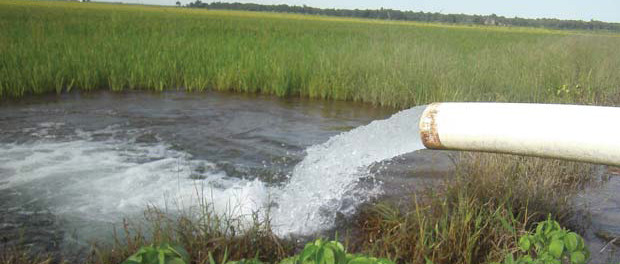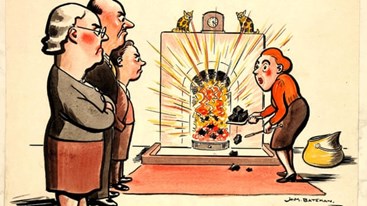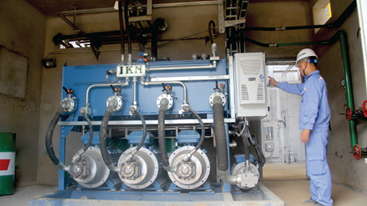Saturday, 27/07/2024 | 07:48 GMT+7
Agriculture sector in India consumes approximately 19% of India’s electricity supply. With a total of 18 million electric pump-sets receiving free or cheap electricity, the net result has not only been a subsidy outfl ow of over INR 20,000 crore for electric pumping, but also inefficiency in energy andwater-use.
With the need to signifi cantly expand area under irrigation – only 45% of India’s agricultural land is irrigated – energy and water demand from pumping is only going to increase. This state of affairs is clearly not sustainable and greater efficiency and lesser wastage in resource-use is the order of the day
Bureau of Energy Effi ciency (BEE) has estimated a saving potential of 25%, or 33 TWh annually, through effi cient pumping. Since nearly a quarter of our electricity is lost during transmission and distribution, this translates to 44 TWh of power purchase avoided by DISCOMs, reducing their costs by more than INR 15,000 crore, and reducing state subsidies by over INR 5, 000 crore annually. This requires an additional INR 54,000 crore of investment in efficient pumps
Farmers have found themselves devoid of financial capacity and/or incentives to migrate to efficient pumps. In most instances, rich farmers benefit from poor targeting or implementation of state subsidy policies. Even the supply to agriculture is not metered as diligently as for other sectors, since state governments subsidise it for end-users.
Therefore, even though a clear business case exists for energy effi ciency (EE) in pumping, skewed incentives ensure that these low hanging fruits remain unexploited.

In order to tap these savings, BEE launched the AgDSM scheme, whereby it would undertake replacement of inefficient pumps by effi cient ones through an Energy Service Company (ESCO), at no additional cost to the farmer. For the 20,750 pumps audited by BEE on 87 feeder lines across eight states, an average annual savings potential of 40% (96 GWh) was assessed, yielding a payback period of 3-4 years).
esearchfinding-1 The first phase of Hubli Ag DSM project in Karnataka covered 600 pumps and provided37% energy savings
BEE engages the services of Energy Efficiency Services Limited (EESL) to implement AgDSM schemes using innovative business models. It provides an overview of a standard model, where EESL enters into a MoU with DISCOM and conducts energy audits, pump replacements and M&V based on its own resources, and shares the energy savings obtained from efficient pumps with the DISCOM.
The first phase of Hubli Ag DSM project in Karnataka covered 600 pumps and provided 37% energy savings. The second phase will cover 10, 000 pumps. Detailed Project Report for first the phase of BESCOM Ag DSM project covering 1 lakh pumps has been prepared, while replacement of 1,500 pumps in Mysore has been initiated. Similar proposals for Haryana and Rajasthan have been approved by respective governments. EESL estimates an investment of INR 1,000 crore for Ag DSM in the next 2-3 years.
Anh Tuan








.jpg?w=367&h=206&mode=crop) Notice for Contracts award for Support to Industrial Enterprises for Energy Audits and Preparation of Feasibility Studies (Package No. C2.2.4)
04/06/2024
Notice for Contracts award for Support to Industrial Enterprises for Energy Audits and Preparation of Feasibility Studies (Package No. C2.2.4)
04/06/2024
 Training Courses for Energy Managers and Energy Auditors
Training Courses for Energy Managers and Energy Auditors
 Vietnam Energy Outlook Report – Pathway to Net Zero
Vietnam Energy Outlook Report – Pathway to Net Zero
 Long Son Cement saves 30% of electricity consumption thanks to heat recovery
Long Son Cement saves 30% of electricity consumption thanks to heat recovery
 Expression of Interest: C2.1.15: Development of Energy-Efficient Technology Catalogs for the Industrial Sector
Expression of Interest: C2.1.15: Development of Energy-Efficient Technology Catalogs for the Industrial Sector
 Optimizing Compressed Air Systems for Southern Industrial Enterprises
Optimizing Compressed Air Systems for Southern Industrial Enterprises
 The Ministry of Industry and Trade Review the Energy Efficiency and Conservation activities in Lao Cai.
The Ministry of Industry and Trade Review the Energy Efficiency and Conservation activities in Lao Cai.
 EOI Extension: C2.2.2: Review and update for current EE benchmarking for 2 sub-industrial sectors
EOI Extension: C2.2.2: Review and update for current EE benchmarking for 2 sub-industrial sectors